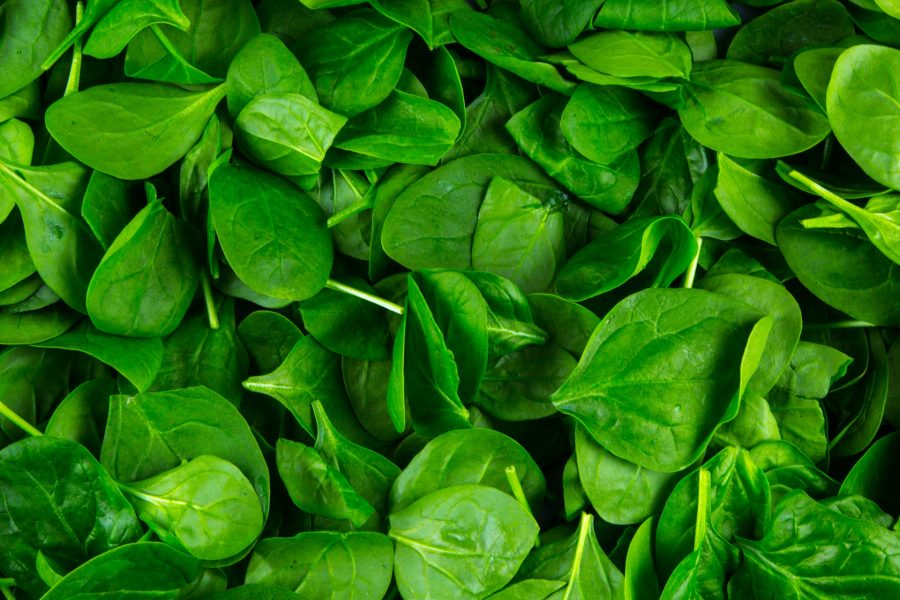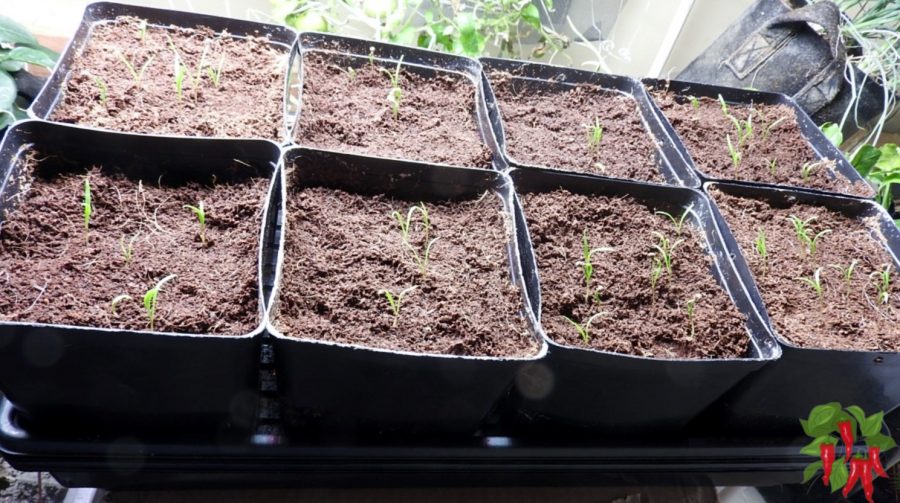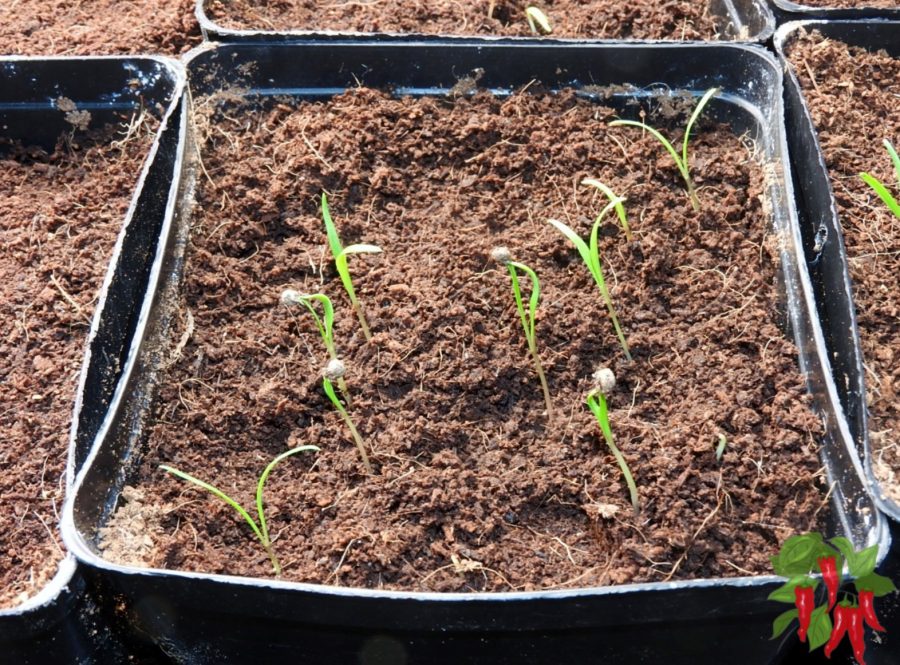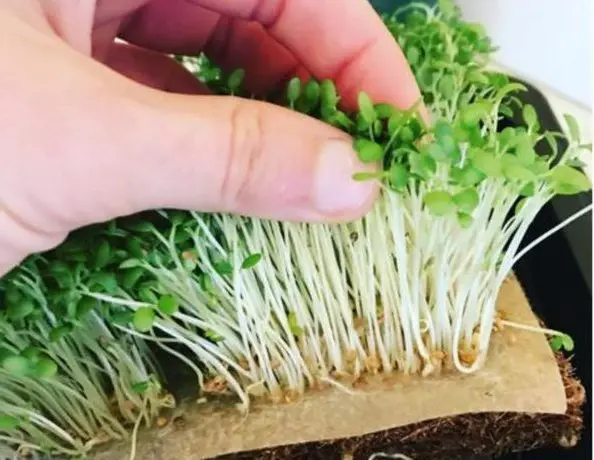This post contains affiliate links. If you buy something from one of our links we may earn a commission. Thanks

Eating healthy is important, but it can be hard to find fresh produce year-round. Fortunately, there are ways you can grow your own produce indoors with very little effort.
Growing baby spinach indoors is a rewarding endeavor that allows you to have fresh greens at your fingertips. With the right conditions, growing this nutritious vegetable indoors is a breeze. The process involves selecting a suitable container, using well-draining soil, ensuring ample light, and maintaining a consistent watering schedule. Baby spinach thrives in cool conditions, making it an ideal choice for indoor gardening.
Did you know even a beginner can grow their own spinach indoors? It’s easy to grow even in a small space. Here’s a step-by-step guide to growing baby spinach indoors. But first:
Why Grow Baby Spinach?
Why grow baby spinach indoors? For starters, it’s a great way to have access to fresh greens year-round, regardless of the weather outside.
Plus, you’ll know exactly what goes into your food and can customize your growing conditions to suit your needs.
Growing Baby Spinach indoors is a simple process. Use a well-draining potting mix in a container with drainage holes. Sow the seeds about half an inch deep, and keep the soil consistently moist. Place the container in a spot with indirect sunlight and expect to harvest in 4-6 weeks.
Growing your own vegetables can also save money in the long run and reduce your carbon footprint by cutting down on food waste and transportation.
Growing your own greens is also a rewarding and healthy hobby, and baby spinach is a great choice for beginners looking to start growing their own produce indoors.
Not only is it easy to grow and packed with nutrients, but it’s also versatile in the kitchen and can be used in a variety of dishes.
We’ll go over seven easy steps for growing baby spinach indoors, from choosing the right container to harvesting and storing your bounty.
By following these steps, you’ll be well on your way to enjoying fresh, homegrown baby spinach all year round.
Growing Baby Spinach Indoors 7 Easy Steps For Beginners

The picture above is some Bloomsdale Longstanding Spinach germinating in coco coir 5 days after seeding. You have to look closely they are still pretty small.
1: Gather Your Materials
The first thing you need to do is gather together your materials:
• You will need spinach seeds. We recommend Bloomsdale Long Standing Spinach because it is heat tolerant and a savoy variety that has a sweeter taste than flat-leaved varieties. But feel free to try one of the many other varieties.
We want to grow true spinach indoors (Spinacia oleracea) but there are several other garden plants with spinach in their name.
You may run across Malabar spinach seeds too and it is also used for greens but that is a totally different plant that prefers warm climates and high humidity.
New Zealand spinach is another unrelated warm-weather green.
• You will need pots. I am using 5 x 5-inch half-gallon pots. You can fit 8 pots into a standard 1020 propagation tray.
• You will need to choose a growing medium for your pots.
You can use any well-draining potting mix but I prefer using coco coir because it is more sustainable than peat-based potting soil.
• You may need an LED grow light
2: Choosing the right container
The first step in growing baby spinach indoors is selecting the right container.
What size container to grow spinach in will depend on how many plants you want to grow together. I am going to keep 1 plant per 1/2 gallon container.
But you could keep four or 5 in a large 5-gallon container.
Baby spinach plants don’t have deep roots, so you don’t need a particularly large container.
We will be growing spinach in containers but spinach can also be grown in trays or beds inside larger containers like storage totes.
Just make sure it’s big enough to accommodate the roots of your plants without taking up too much space.
Consider using plastic pots they are inexpensive and work well. Just be sure the container has drainage holes to prevent excess water from accumulating and causing root rot.
Choosing A Growing Medium
As for soil, baby spinach plants prefer well-drained soil that’s rich in nutrients and organic matter. You can use a potting soil mix.
Don’t try to use garden soil. Garden soil may contain bugs or diseases and compacts too much.

I think coco coir is a better and more sustainable growing media when compared to potting soil.
You can add compost or worm castings to your soil to boost its nutrient content or you can use a liquid fertilizer like a fish emulsion to feed your plants.
3: Selecting The Right Location
The next step is choosing the right location for your baby spinach plants.
Baby spinach plants need at least 6 hours of indirect sunlight per day to grow properly.
Choose an area with good air circulation.
How To Grow Spinach Indoors In Winter
A sunny spot like a windowsill is ideal. But during the winter light levels are low and days are short.
You will want to start growing spinach indoors under lights during the winter.
If you want to grow your own vegetables year-round you will need supplemental lighting. An LED grow light is a good choice.
It also means you can place your garden anywhere even if you don’t have a bright window.
Temperature is also important when it comes to growing baby spinach indoors.
These plants prefer cool temperatures and can tolerate frost, so a location that stays between 45-75 degrees Fahrenheit is best.
For best germination, the soil temperature should be below 70°
Because spinach is a cool-season crop it is grown in the spring and fall outdoors.
That’s because warm weather and long days later in the growing season can cause spinach plants to bolt and go to seed.
Growing Spinach Outdoors On A Balcony
Outdoors, spinach is often started in a cold frame in early spring to avoid hard freezes. Spinach can tolerate light frost and actually gets sweeter after a frost.
With an early start, hot weather can be avoided. So if you have a balcony you can try this in early spring.
4: Sowing The Seeds
Once you’ve chosen a container and location, it’s time to plant your baby spinach seeds. Begin by preparing the soil in your container.
Mix in any compost or fertilizers you’re using. Water it to remove any air pockets before planting your seeds. Make sure it’s moist but not soggy.
Next, sow seeds over the surface of the soil, making sure to leave enough space between them for the plants to grow.
Push them into the soil with your fingers or cover them with a thin layer of soil. They should not be more than 1/4 inch deep.
How many you plant depends on the size of your container. Not every seed will germinate so it’s ok to plant some extra seeds.
You can thin them out as they grow.
For a 6-inch pot, I suggest leaving one final plant. It will fill the pot as it continues to grow.
Water the seeds gently, making sure not to wash them away or disturb their placement.
The best way is to mist the soil with a spray bottle to keep it moist.
Spinach is a fast-growing plant and you will have home-grown baby spinach in about a month.
5: Give Them Light
Once your seeds have germinated you need to get them into the light. You can use a sunny windowsill or a balcony if you have one.
Full sun is ok as long as the plants don’t get too hot but spinach can also tolerate partial shade. A mix of both will work well.
Giving them 6 hours of sunlight is ideal but be careful. Long days can cause spinach to go to seed so limit the light they get to less than 12 hours a day.
If you are using a grow light make sure to put it on a timer.
6: Caring For Your Baby Spinach Plants
Now that you’ve planted your seeds, it’s time to start taking care of your baby spinach plants.
Water your young plants regularly to keep the soil moist, but be careful not to overwater. This can lead to fungal diseases like downy mildew.
Baby spinach plants like moist soil but too much water can cause root rot, so it’s important to let the soil dry out slightly between watering.
Always empty any excess water from their tray. It is bad to let the pots sit in standing water.
Fertilize your plants every few weeks using a balanced liquid fertilizer or compost tea. This will help provide the nutrients they need to grow.
Keep an eye out for pests, such as aphids which can damage your plants. Use organic pest control methods, such as introducing predatory insects or using insecticidal soap, to keep pests at bay.
7: Harvesting Baby Spinach
When your baby spinach plants are ready to be harvested, it’s important to know the right time and method.
Baby spinach is ready to be harvested when the baby spinach leaves are large enough to be eaten, usually starting about 4 weeks after planting.
You can either pick the leaves individually as needed or cut the entire plant down at the base of the plant and start again.
You can extend your harvest by just removing the outer leaves. If you cut the plant at soil level it won’t grow back.
When harvesting, use clean, sharp scissors or a knife to cut the leaves off the plant.
Be sure to remove any yellow or wilted leaves to encourage new growth.
To store your baby spinach, rinse it thoroughly and pat it dry. Instead you can use a salad spinner if you have one.
You can then wrap it in a damp paper towel and store it in a plastic bag in the refrigerator, where it should keep for a few days.
Alternatively, you can freeze your baby spinach by blanching it first and then packing it into an airtight container or freezer bag.
Baby Spinach At 2 Weeks Growing In Pots
This tray was seeded two weeks ago and we have some nice young spinach plants. I will thin to one plant per pot in about a week.
Baby Spinach FAQs
Indoor gardening can be an exciting way to grow your own food, and baby spinach is a popular choice for its quick growth and versatility.
But you might have some questions about how to get the best yield or troubleshoot issues. Let’s answer some of those frequently asked questions.
Q. Can baby spinach be grown indoors?
A. Yes, it is possible to grow baby spinach indoors. Spinach is a cool-season leafy green that grows best in temperatures between 45 and 75 degrees Fahrenheit.
It can be grown in a container or in a hydroponic system indoors, as long as it has access to sufficient light and water. So start growing spinach indoors year round.
Q. How long does it take to grow spinach indoors?
A. Spinach microgreens can be harvested in 2 weeks but if you want to harvest spinach leaves you will want to wait about 30 days.
It typically takes six to eight weeks for baby spinach to grow to maturity indoors.
However, the exact length of time will depend on a number of factors, including the growing conditions, the variety of spinach being grown, and the stage at which the spinach is harvested.
Q. How do you grow spinach indoors under lights?
A. Spinach grows well under lights. The most important thing is to limit the length of time the lights are on.
Spinach is a plant that will go to seed once daylight reaches 14 hours a day. So use a timer to turn your lights off after 10-12 hours.
Q. How often do you water indoor spinach?
A. Spinach likes moist soil but it is important to avoid overwatering. Wait until the top inch of the soil is dry before watering again.
Make sure your pot has drainage holes and remove any excess water from its tray.
Q. Can spinach grow without sunlight?
A. No plant can grow without light. However, some plants love the shade and need less sunlight than others.
Spinach needs 4-6 hours of light to grow but can tolerate some shade.
All plants can be grown without sunlight if you use a supplemental light source such as an LED grow light or fluorescent light.
Q. Will spinach continue to grow after cutting?
A. It is possible for spinach to regrow after cutting, but it depends on how you harvest the leaves.
If you cut spinach leaves from a healthy plant and leave the main stem intact the plant will continue to grow and produce new leaves.
To encourage spinach to regrow after cutting, it is important to cut the leaves cleanly, leaving the stem and roots intact.
It is also worth noting that spinach plants will eventually bolt, or go to seed, as they mature.
This means that the plant will stop producing leaves and focus on flowering and seed production.
Once a spinach plant bolts, it will not continue to grow and produce new leaves.
Final Thoughts
Growing baby spinach indoors is a fun and rewarding activity that anyone can do, regardless of their gardening experience.
It doesn’t have to be complicated or overwhelming and by following the steps outlined in this post, you’ll be well on your way to enjoying fresh, homegrown baby spinach all year round.
Whether you’re using it in salads, smoothies, or as a base for a pesto sauce, the possibilities are endless with this nutritious and delicious fresh spinach.
So why wait? Give it a try and see for yourself the benefits of growing your own baby greens indoors.








